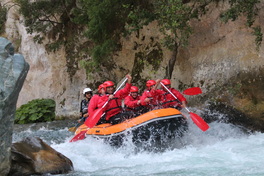
What to do?
- Walks in the woods
- Acquatrekking
- Horseback ridin
- Canyoning
- Rafting
- Visits to caves, churches, museums, sanctuaries, archaeological sites (Excavations of Sybaris)
The “Associazione Culturale Albore” and the B&B Ka Edda with the collaboration of the “San Giovanni Battista” parish organize the following guided tours:
- Walks in the woods
- Acquatrekking
- Horseback ridin
- Canyoning
- Rafting
- Visits to caves, churches, museums, sanctuaries, archaeological sites (Excavations of Sybaris)
The “Associazione Culturale Albore” and the B&B Ka Edda with the collaboration of the “San Giovanni Battista” parish organize the following guided tours:
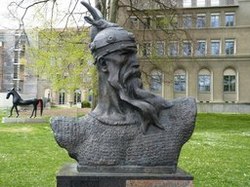
A) Day dedicated to Italo-Albanese ethnicity (Arbëreshë)
a) Visit the main church of Lungro, developed into a Cathedral in 1919 on the occasion of the Eparchy’s foundation. Rebuilt in the eighteenth century (after being destroyed by an earthquake) has icons, Byzantine frescoes and paintings from the Neapolitan school.
b) Only a few steps away we find Lungro’s historical Salt Mine Museum (old salt mine mentioned by Plinio il Vecchio and eventually closed in 1976), which opened in June 2010. The museum collects documents, uniforms and equipment used by mine workers in the past .
c) Arrive at Acquaformosa’s main square Papas V. Matrangolo to admire the splendid mosaic that covers the entire parish church of San Giovanni Battista. This church is an ambitious work created by Papas Vincenzo Matrangolo that takes us through every scene of the old and new Testament.
d) Break:
- Lunch at the parish church (own service for groups);
- Packed lunch in a room made available by the church.
e) The afternoon begins with a visit to the Church of the Immacolata Concezione, the first Oratory for the Albanians who reached Acquaformosa, which was built between the late fifteenth century and the early sixteenth century. You can admire the beautifully painted wooden ceiling and frescoes from the year 1500. Also, in the chapel there are kept 17 surviving relics of store from the Monastery of Santa Maria di Leucio.
f) It is also possible to find the house of the popular arberesh (Italo-Albanian) poet Simeon Horace Capparelli, at the square “Ka Vidi”, located in our historic downtown. His poems have been passed down from generation to generation until today and remained etched in the memory of those who used to listen to them.
g) Moving on, we arrive at Palazzo Rossano, the residence of a large landowner’s family from the past. Inside, the residence still preserves several elements of an old country civilization, as well as a private chapel dedicated to the Madonna Addolorata.
h) Our day will end in Piazza Fontana Vecchia (ka Kroy Pjak), named after an ancient fountain, which is significantly relevant for the town since it was created before all the houses had running water. Once the square served as a public lavatory and as for watering mules and horses, both used to transport timber from our mountain. Today the area has been restored, and the old architectural appearance can be seen again with the two-headed eagle and two lions.
a) Visit the main church of Lungro, developed into a Cathedral in 1919 on the occasion of the Eparchy’s foundation. Rebuilt in the eighteenth century (after being destroyed by an earthquake) has icons, Byzantine frescoes and paintings from the Neapolitan school.
b) Only a few steps away we find Lungro’s historical Salt Mine Museum (old salt mine mentioned by Plinio il Vecchio and eventually closed in 1976), which opened in June 2010. The museum collects documents, uniforms and equipment used by mine workers in the past .
c) Arrive at Acquaformosa’s main square Papas V. Matrangolo to admire the splendid mosaic that covers the entire parish church of San Giovanni Battista. This church is an ambitious work created by Papas Vincenzo Matrangolo that takes us through every scene of the old and new Testament.
d) Break:
- Lunch at the parish church (own service for groups);
- Packed lunch in a room made available by the church.
e) The afternoon begins with a visit to the Church of the Immacolata Concezione, the first Oratory for the Albanians who reached Acquaformosa, which was built between the late fifteenth century and the early sixteenth century. You can admire the beautifully painted wooden ceiling and frescoes from the year 1500. Also, in the chapel there are kept 17 surviving relics of store from the Monastery of Santa Maria di Leucio.
f) It is also possible to find the house of the popular arberesh (Italo-Albanian) poet Simeon Horace Capparelli, at the square “Ka Vidi”, located in our historic downtown. His poems have been passed down from generation to generation until today and remained etched in the memory of those who used to listen to them.
g) Moving on, we arrive at Palazzo Rossano, the residence of a large landowner’s family from the past. Inside, the residence still preserves several elements of an old country civilization, as well as a private chapel dedicated to the Madonna Addolorata.
h) Our day will end in Piazza Fontana Vecchia (ka Kroy Pjak), named after an ancient fountain, which is significantly relevant for the town since it was created before all the houses had running water. Once the square served as a public lavatory and as for watering mules and horses, both used to transport timber from our mountain. Today the area has been restored, and the old architectural appearance can be seen again with the two-headed eagle and two lions.
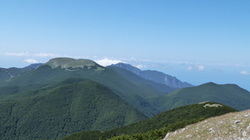
B) Day Contemplating the Nature at Parco Nazionale del Pollino
a) Departure from Piazza Limonello (Acquaformosa) towards Santa Maria del Monte (1464 m.). Visit the Santa Maria del Monte Sanctuary, which dates back to the tenth century. Inside the church there is a tufa stone statue of the “Madonna che allatta”.
b) While going from the Sanctuary through the picnic area, you will reach a rock wall (timpa e piasur - "split stone"), from where it’s possible to admire beautiful and pristine landscapes. Continuing with our walk through the beech forest, we will see the Loricati pines when we arrive to Timpone del Pino. These pines, which are the insignia of the park, grow on the surface of the impervious rocks. In this wild nature, botanical aspects of great value are well preserved.
c) Coming down from this rocky hill you will reach a wide plain, Piano di Campolongo. Here we find a well equipped lodge where you will be able to have lunch (there is a restaurant inside) or you can also eat your packed lunch in the picnic area of Santa Maria del Monte.
d) After the well-deserved rest, we will continue with the natural trail of the CAI, you will walk down a path surrounded by beech forests and chestnut trees until you reach the town Palazzo, from where it’s possible to admire the Ionian Sea, from Sibari to the Schiavonea Gulf.
e) Always following the natural trail, you will arrive to the wildlife area from Acquaformosa (Center for Birds of Prey), which is home to birds of prey that have been victims of poaching and no longer able to fly and live in their natural habitat.
f) After the guided tour to the wildlife we proceed to return home. Through the narrow streets of the historic center of Acquaformosa you will get to Piazza Fontana Vecchia, finalizing our day in the nature.
a) Departure from Piazza Limonello (Acquaformosa) towards Santa Maria del Monte (1464 m.). Visit the Santa Maria del Monte Sanctuary, which dates back to the tenth century. Inside the church there is a tufa stone statue of the “Madonna che allatta”.
b) While going from the Sanctuary through the picnic area, you will reach a rock wall (timpa e piasur - "split stone"), from where it’s possible to admire beautiful and pristine landscapes. Continuing with our walk through the beech forest, we will see the Loricati pines when we arrive to Timpone del Pino. These pines, which are the insignia of the park, grow on the surface of the impervious rocks. In this wild nature, botanical aspects of great value are well preserved.
c) Coming down from this rocky hill you will reach a wide plain, Piano di Campolongo. Here we find a well equipped lodge where you will be able to have lunch (there is a restaurant inside) or you can also eat your packed lunch in the picnic area of Santa Maria del Monte.
d) After the well-deserved rest, we will continue with the natural trail of the CAI, you will walk down a path surrounded by beech forests and chestnut trees until you reach the town Palazzo, from where it’s possible to admire the Ionian Sea, from Sibari to the Schiavonea Gulf.
e) Always following the natural trail, you will arrive to the wildlife area from Acquaformosa (Center for Birds of Prey), which is home to birds of prey that have been victims of poaching and no longer able to fly and live in their natural habitat.
f) After the guided tour to the wildlife we proceed to return home. Through the narrow streets of the historic center of Acquaformosa you will get to Piazza Fontana Vecchia, finalizing our day in the nature.
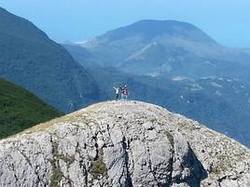
C) Hiking in Parco Nazionale del Pollino
Excursion on trail # 601: Piano Lanzo – Cozzo Pellegrino:
Excursion time: 6 hours aprox. - 4 Km Length
Altitude difference 642 m. Difficulty “E” (hiking).
Departure by car towards Piano Lanzo in San Donato di Ninea. This one will be the beginning of our natural trail that will take us up to Cozzo del Pellegrino (1987 meters).
We begin the path between ferns and wild strawberries. Then we pass through a chestnut trees’ forest and another one made up by Neapolitan alders. During our walk we will be able to see kestrels and buzzards circling in search of prey.
Continuing, the forest becomes a pure beech forest, with beautiful silver-barked trees that rise like columns over the carpet of reddish leaves. Advancing through the bushes we get closer to the ridge; from this point, the route runs along the entire ridge and within a short time you will get to the top of the Cozzo Pellegrino.
Along the last stretch of the trail, and on top of the Cozzo Pellegrino, it’s possible to enjoy a fantastic 360 degree panorama that includes the Tyrrhenian coast (west), the mountains of the Pollino (north), the group of Montea (south) and the Sila Mountains (east ). In addition, on a clear day you can even see the Gulf of Sibari and the Ionian Sea, the Aeolian Islands and the southern Calabria. After a needed break we will resume our trip with the hope of seeing some of the “inhabitants” of this mountain: deers, badgers, hedgehogs, porcupines, buzzards and ravens.
To conclude our trip, we will visit the cave of Sant'Angelo. The cave, located at the foot of the Cozzo Pellegrino and dug by karst phenomena, it was occupied by hermits since the seventh century. It is easy to access through a portico, covered with medieval and eighteenth century frescoes. After this visit we will have finished our trip and return to Acquaformosa.
Excursion on trail # 601: Piano Lanzo – Cozzo Pellegrino:
Excursion time: 6 hours aprox. - 4 Km Length
Altitude difference 642 m. Difficulty “E” (hiking).
Departure by car towards Piano Lanzo in San Donato di Ninea. This one will be the beginning of our natural trail that will take us up to Cozzo del Pellegrino (1987 meters).
We begin the path between ferns and wild strawberries. Then we pass through a chestnut trees’ forest and another one made up by Neapolitan alders. During our walk we will be able to see kestrels and buzzards circling in search of prey.
Continuing, the forest becomes a pure beech forest, with beautiful silver-barked trees that rise like columns over the carpet of reddish leaves. Advancing through the bushes we get closer to the ridge; from this point, the route runs along the entire ridge and within a short time you will get to the top of the Cozzo Pellegrino.
Along the last stretch of the trail, and on top of the Cozzo Pellegrino, it’s possible to enjoy a fantastic 360 degree panorama that includes the Tyrrhenian coast (west), the mountains of the Pollino (north), the group of Montea (south) and the Sila Mountains (east ). In addition, on a clear day you can even see the Gulf of Sibari and the Ionian Sea, the Aeolian Islands and the southern Calabria. After a needed break we will resume our trip with the hope of seeing some of the “inhabitants” of this mountain: deers, badgers, hedgehogs, porcupines, buzzards and ravens.
To conclude our trip, we will visit the cave of Sant'Angelo. The cave, located at the foot of the Cozzo Pellegrino and dug by karst phenomena, it was occupied by hermits since the seventh century. It is easy to access through a portico, covered with medieval and eighteenth century frescoes. After this visit we will have finished our trip and return to Acquaformosa.
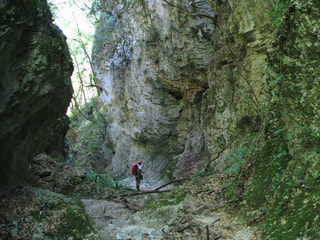
D) Galatro’s throat canyon
The beautiful and wild canyon that develops upstream of the Ponte dei Colombi is long, narrow and smooth with about twenty drops where you can practice canyoning.
Thanks to Mr. Michele Angileri for the photos and the material made available. For more information and photos:
http://www.micheleangileri.com/cgi-bin/schedap.cgi?galatro-en--
The beautiful and wild canyon that develops upstream of the Ponte dei Colombi is long, narrow and smooth with about twenty drops where you can practice canyoning.
Thanks to Mr. Michele Angileri for the photos and the material made available. For more information and photos:
http://www.micheleangileri.com/cgi-bin/schedap.cgi?galatro-en--
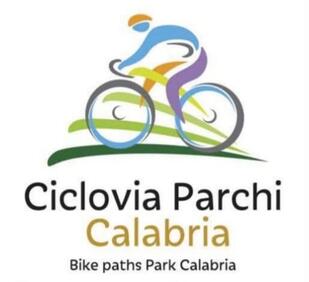
Bike path Parks of Calabria
Acquaformosa has been included in one of the routes of the new Bike paths of the Parks of Calabria.
The Castrovillari-Lungro-Acquaformosa route covers 34 km, starting from Castrovillari (360 m), and runs along the former Ss 105, the ancient salt road that crosses 4 Arberesh communities (Italian-Albanian): San Basile, Firmo, Lungro with arrival in Acquaformosa (756 m).
For further information you can visit the website: www.cicloviaparchicalabria.it
Acquaformosa has been included in one of the routes of the new Bike paths of the Parks of Calabria.
The Castrovillari-Lungro-Acquaformosa route covers 34 km, starting from Castrovillari (360 m), and runs along the former Ss 105, the ancient salt road that crosses 4 Arberesh communities (Italian-Albanian): San Basile, Firmo, Lungro with arrival in Acquaformosa (756 m).
For further information you can visit the website: www.cicloviaparchicalabria.it
